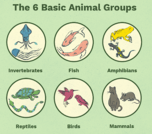
4th Grade Elementary school CLIL lesson about the Animal Classes
- Subject:
- Languages
- Life Science
- Material Type:
- Assessment
- Lesson
- Author:
- David Cortes
- Date Added:
- 04/11/2024

4th Grade Elementary school CLIL lesson about the Animal Classes

7th Grade Elementary school CLIL lesson about the Animal Classes
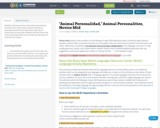
Students will use pictures to determine the emotions that others feel. Afterwards, students will take an animal personality test to determine what type of animal they are most like. Students will then share with others what animal they are most like and why they are most like that animal.
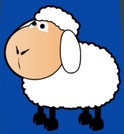
2nd Grades Unit 10 AnimalsOne can use EDPUZZLE to prepare some interactive activities for students. You can click the link below for an example; https://edpuzzle.com/media/64f6ca560712ca401d1d89ee

This is a digital interactive anthology of texts devoted to Spanish Romanticism especially designed for university non-Spanish speakers that are enrolled in Spanish majors or minors and are at least in their third year of study. This anthology may be used as textbook for any course by any instructor who might desire to use it without any written permission from the author. It may be used as a whole for a course on Spanish Romanticism or any parts of it may be used in conjunction with other texts to offer a course on a wider period of Spanish literature. The instructor (or reader) is more than welcome to use it as he or she sees fit. However, references to it are expected if the anthology is used for scholarly works.
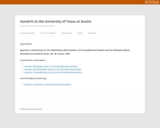
Aparārka’s Commentary on the Yājñavalkya-dharmaśāstra.
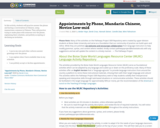
In this activity, students will practice answer the phone and having a conversation in Chinese, using mannerisms common in Chinese. They will practice trying to make plans with someone over the phone, explaining their schedule, and politely accepting or declining an invitation.

In this activity, students will practice answer the phone and having a conversation in a Chinese style. They will practice trying to make plans with someone over the phone, explaining their schedule, and politely accepting or declining an invitation.
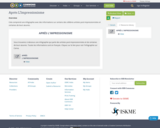
Cela comprend une infographie avec des informations sur certains des célèbres artistes post-impressionnistes et certaines de leurs œuvres.
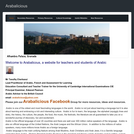
Arabalicious is a website full of resources for teachers of Arabic, run by Taoufiq Cherkaoui. The website includes PowerPoints available for download on concepts such as telling time, fruits and vegetables, culture, and basic greetings, to name a few. Worksheets to go along with the PowerPoints are also available for free download. The website further includes pictures that are available with the author's permission and some postings on available jobs for Arabic instructors as per 2012.
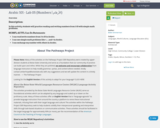
Description:In this activity, students will practice reading and writing numbers from 1-10 with simple math problems.NCSSFL-ACTFL Can-Do Statements:I can read\write numbers from 1 to 10 in Arabic.I can use simple math problems like +, -, and = in Arabic.I can exchange my number with others in Arabic.
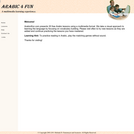
Arabic 4 fun includes five categories: alphabet, numbers, shapes, colors, and fruit names. Within each category, there is an introduction which explains the lesson, three exercises (easy, medium, & hard), and a memory game. The memory game includes the words written out in Arabic. The user may self-study or watch the explained lesson.
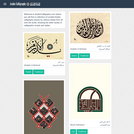
What started out as a gallery to display the calligraphy of two artists is today a website devoted to the art of Arabic calligraphy. It includes a wall where other artists can post their own Arabic calligraphy, basic information on the Arabic language, a blog about calligraphy, and more. Users can post comments on the website.

This webpage displays a common conversation between three friends. The structure and topics of the conversation are purposefully general so as to be helpful to students' ability to create and sustain conversations of their own. The conversation includes Arabic text, transliteration, and translation.
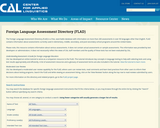
The Arabic Course Achievement tests measure reading, writing, listening and speaking skills, as well as grammar and vocabulary. The exams can be administered to students of all proficiency levels in PK-12 schools as well as college. The length of the exams is 1-2 hours and can be scored by a computer or a locally trained scorer. The intended test use can be for placement, credit by examination, achievement, and or fulfilling a requirement.

This dictionary (published in 1899) is intended for the use of students. Due to its publication date, it corresponds more to classical Arabic or older formal Arabic rather than to MSA. It is organized by root with derivative forms of words are included under their three-letter root.

This is a list of over 200 cognates in English and in Arabic separated into topical chapters, like food, animals, and politics. Words are written in English, Arabic, and in Arabic transliteration for the very beginner. It also includes a list of the letters in the Arabic alphabet and how they are pronounced. It is intended to show users how much Arabic they already know.
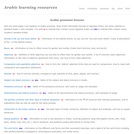
This page contains brief lessons about specific grammatical issues and focuses mostly on Egyptian colloquial Arabic, though it does also include some information about Modern Standard Arabic (MSA). Given their brevity, the lessons are of limited use.
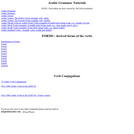
This site has numerous brief, text tutorials on formal Arabic grammatical topics such as sentence structure, verb conjugation, and pronouns, as well as an extended section on the 10 most common verb forms. These tutorials usually favor transliteration over Arabic script.
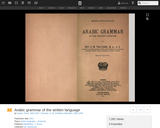
First published in 1910, this book focuses exclusively on the grammar of Modern Standard Arabic as it is used in written Arabic. It contains an introduction that explains the Arabic alphabet and pronunciation and 49 lessons that describe the foundational grammatical elements of MSA, including articles, gender, and the noun and verb systems. The text includes Arabic-English and English-Arabic vocabulary sections as well as a supplement with extract from the Qur'an, classical literature, media, and correspondence. The filesize of the PDF is 32 MB.